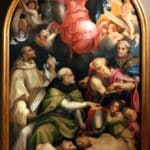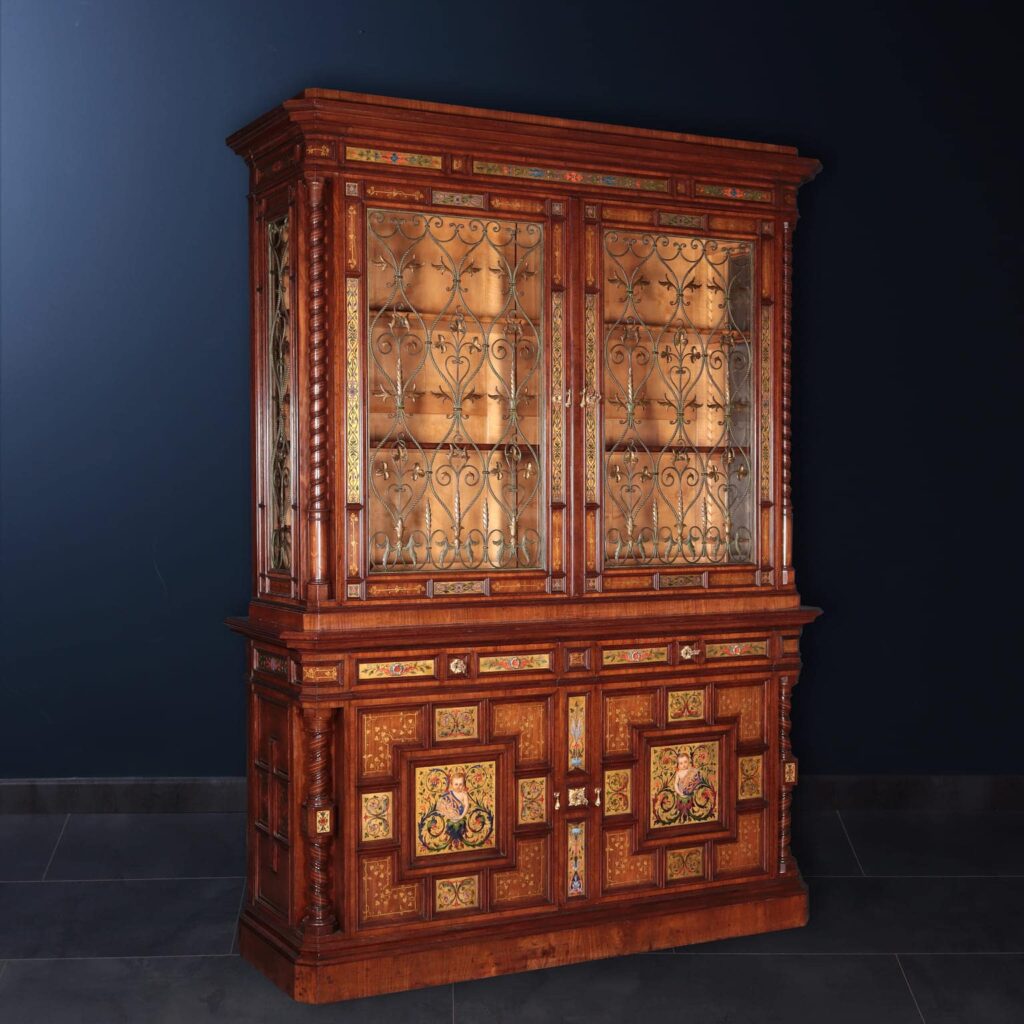Giuseppe Speluzzi
Giuseppe Speluzzi (1827-1890) was among the protagonists of Milan in the second half of the nineteenth century, when artistic production and culture in general were strongly influenced by the great changes of those years, not least the insurrections of ’48.
The industrial revolution had led to a modernization of production techniques through new machinery, and by now the need was felt to present these innovations to the public, thus allowing artisans to update themselves. In this regard, the great Universal
Expositions in London (1851 and 1862) and Paris (1855, 1867, 1878) were launched, where products capable of combining aesthetics with modern comfort requirements were presented. (see the article Universal exhibitions).
Stylistically, the forms and decorations typical of the Late Empire were replaced by an often eclectic revival. The houses of the bourgeoisie were furnished and decorated with the revival of medieval, Renaissance and Rococo models. Once again it was Paris that characterized itself as a reference model, especially in the detail of the metal finishes and the inlays of precious materials, which from here spread throughout Europe.
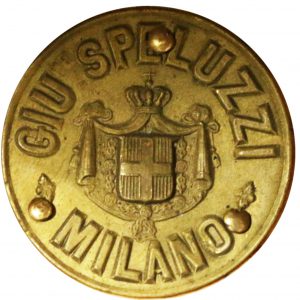
In Italy, Milan was one of the first cities to incorporate this change. In a review of the 1857 Brescia Exposition Zanardelli affirms: “Milan in luxury furniture can perhaps compete for solidity, precision, elegance and variety with Paris itself and from the Speluzzi, Colombo and Fontana workshops there are works that I am not sure inferior to the works of the most exquisite workmanship of the sixteenth century “.
Giuseppe Speluzzi himself was counted among the most important artists, whose furniture production can even be compared to the Parisian one for the executive quality, while the models of inspiration are often Renaissance.
Speluzzi specialized in carving, in brass and tortoiseshell inlays “alla Boulle”, in applications in precious metals and gilded bronzes.
Ours began his career at his father Bernardino’s workshop, opened in Milan in 1837, immediately proving to be a skilled carver and distinguishing himself in the production of inlaid furniture in the style of another great artist: Giuseppe Maggiolini. Speluzzi, however, proved to be able to adapt to the change in taste, updating himself on the Northern European and Parisian novelties in particular.
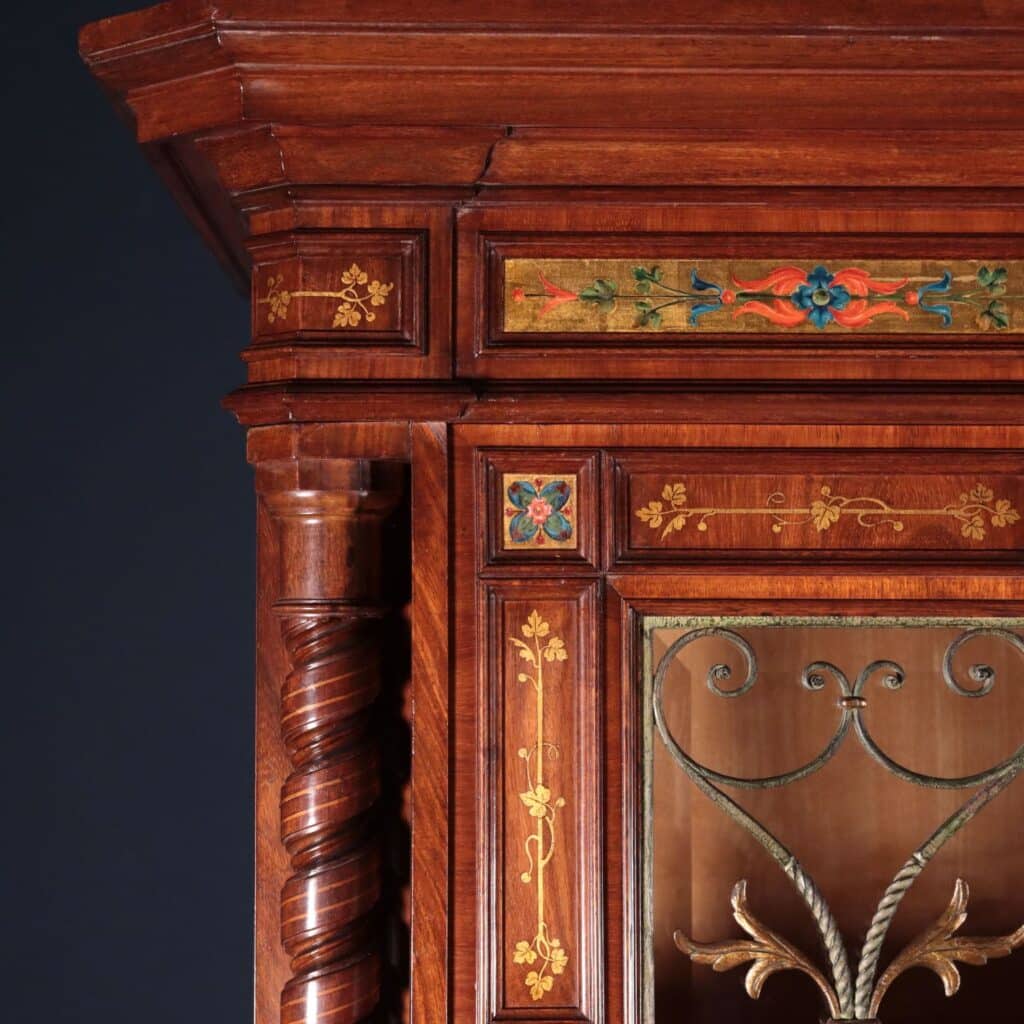
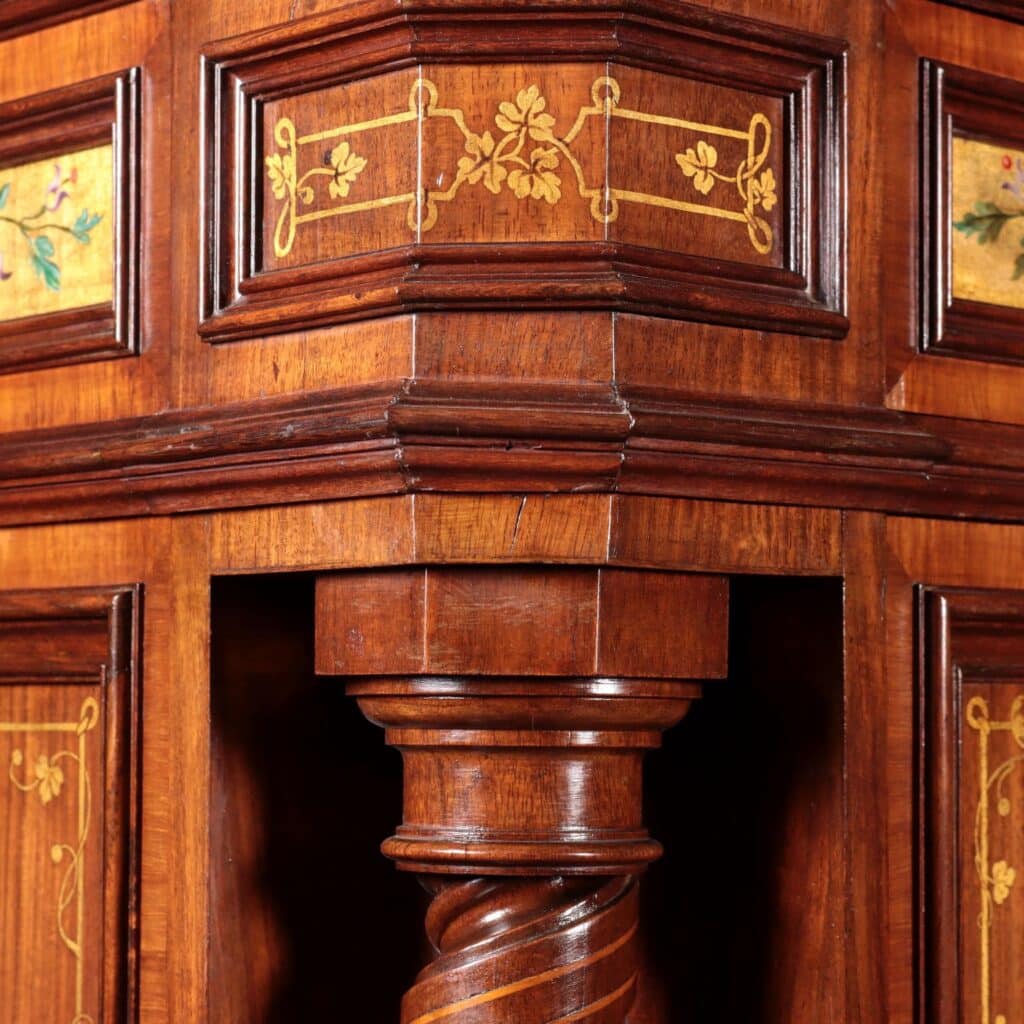
Giuseppe Speluzzi immediately emphasized his belonging to Milan, as evidenced by the logo of his workshop which in the center bears the symbol of the city, used to mark its production. The strong bond and esteem that Speluzzi had towards the Municipality must certainly have been reciprocal if in 1868 the city itself entrusted the artist with the creation of a precious cabinet to be given to Queen Margherita of Savoy on the occasion of her wedding.
He was also particularly sought after by the families of the nobility and the city bourgeoisie. To cope with the large number of these demanding commissions, Speluzzi made use of a large number of excellent craftsmen: cabinetmakers, cabinetmakers, bronze workers, carvers, gilders.
Among the most famous commissions there is certainly the one for Gian Giacomo Poldi Pezzoli. The collector from a noble family was carrying out his project to furnish his palace in style, a feat for which he called one of the main Milanese artists and artisans (https://fineart.dimanoinmano.co.uk/poldi-pezzoli/).
Giuseppe Speluzzi was in fact active starting from 1856 as a carver and bronze sculptor for the decorations of the environment in the Neo-Romanesque style and subsequently in the design of furnishings for other rooms. Certainly noteworthy is the table whose hard stone worktop shows contacts with the Florentine artistic environment, a leader in this type of production.
In confirmation of the esteem that was reserved for this little-known cabinetmaker, the desk that King Umberto I and Queen Margherita of Savoy commissioned to furnish the Royal Villa of Monza, probably from our Speluzzi, has passed on the antiques market. he created, again for the Royal House, a writing desk with very similar bronzes and today preserved in the Quirinale collections. A craftsman therefore very active and in demand, so much so that he received commissions from the royal family itself.



